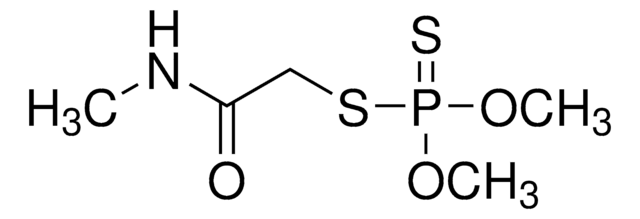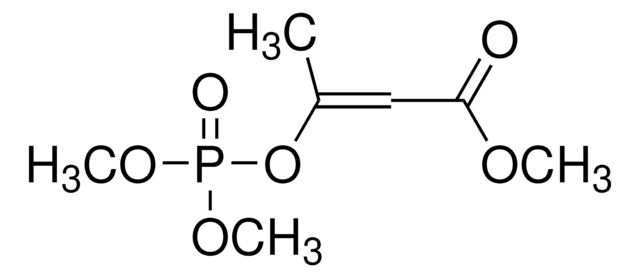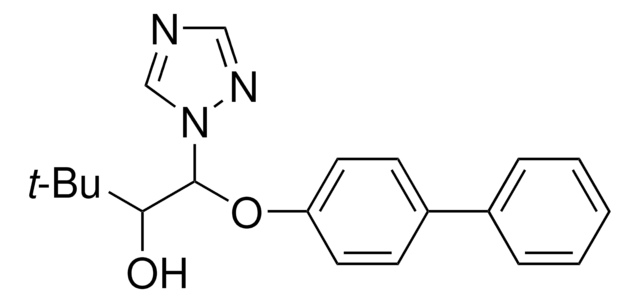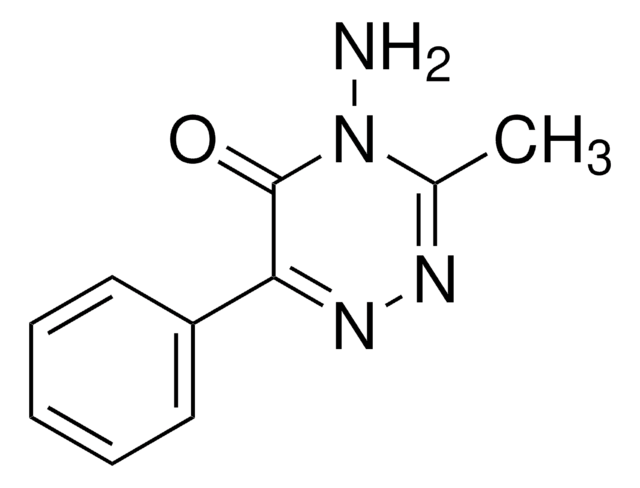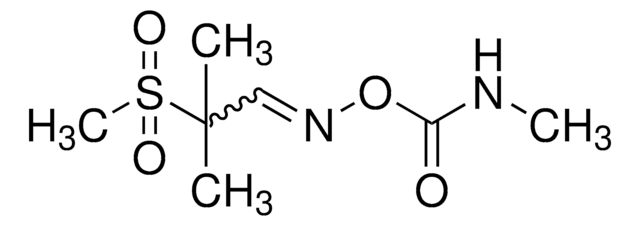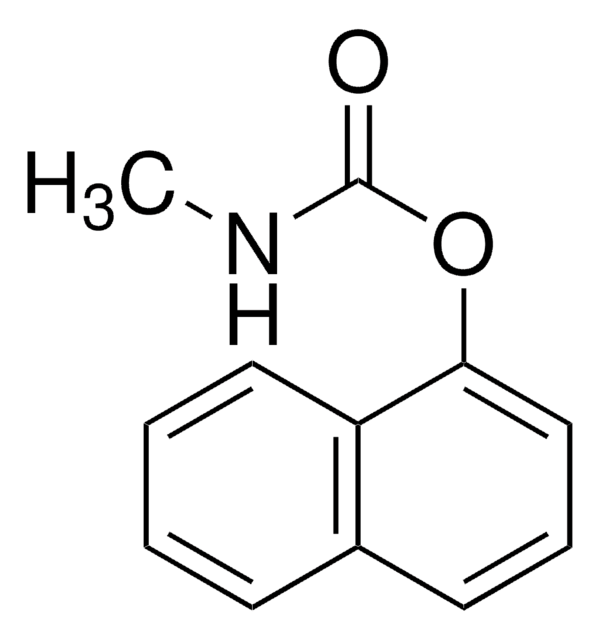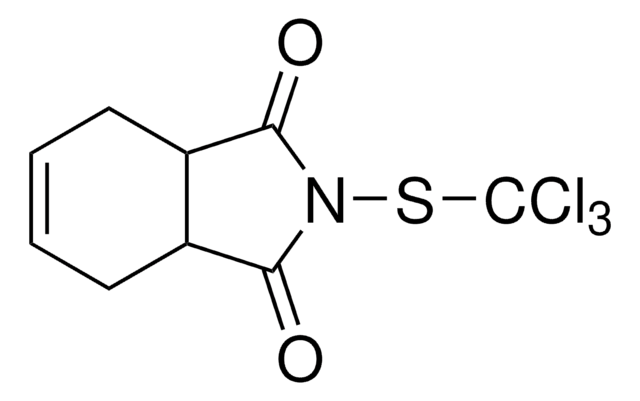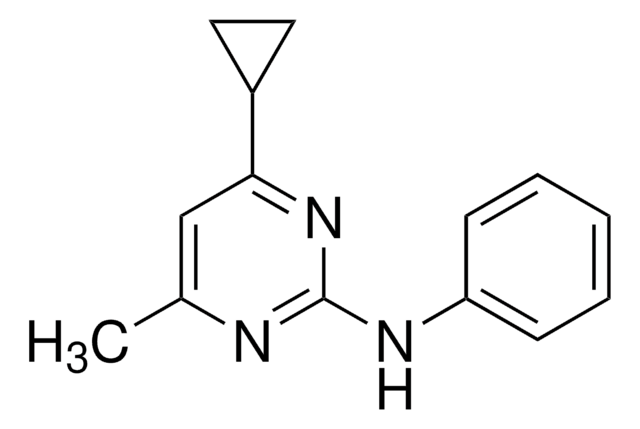Kluczowe dokumenty
CRM06796
Chloridazon
certified reference material, TraceCERT®, Manufactured by: Sigma-Aldrich Production GmbH, Switzerland
Synonim(y):
Pyrazone
About This Item
Polecane produkty
klasa czystości
certified reference material
TraceCERT®
Poziom jakości
linia produktu
TraceCERT®
okres trwałości
limited shelf life, expiry date on the label
producent / nazwa handlowa
Manufactured by: Sigma-Aldrich Production GmbH, Switzerland
temp. przechowywania
−20°C
ciąg SMILES
NC1=C(Cl)C(=O)N(N=C1)c2ccccc2
InChI
1S/C10H8ClN3O/c11-9-8(12)6-13-14(10(9)15)7-4-2-1-3-5-7/h1-6H,12H2
Klucz InChI
WYKYKTKDBLFHCY-UHFFFAOYSA-N
Szukasz podobnych produktów? Odwiedź Przewodnik dotyczący porównywania produktów
Powiązane kategorie
Opis ogólny
Chloridazon is a selective organochlorine herbicide that belongs to the group of pyridazinone compounds. It acts as systemic soil and leaf herbicide by inhibiting the photosynthesis process. It is used for pre-plant, pre-emergence, and early post-emergence, to control annual broad-leaved weeds, sugar beets, and red table beets.
Chloridazon is not authorized for use in the European Union as per the European Council Directive 91/414/EEC concerning the placement of plant protection products on the European market. Maximum residue levels (MRLs) have been set according to Reg (EU) 2016/1015 for Chloridazon for various products of plant and animal origin from 0.05 to 5 mg/kg.
Zastosowanie
- To examine the effects of chloridazon on the response of the frog neuroepithelial synapse to electrical stimulation and the basal values of the bioelectric parameters of the frog skin
- To study the transformation of n-chloridazon in a fixed bed bioreactor for verification of microbial degradability at different dosed contamination levels and govern the adaptation processes
- To investigate the effects of thermal and acid treatments on the sorption properties of a natural sepiolite by evaluating the adsorption process of chloridazon herbicide
- To prepare and characterize controlled release formulations of chloridazon using biodegradable polymers like ethylcellulose and lignin
- To investigate the potential use of lignin-based controlled release formulations (CRFs) to control release rate and leaching of metribuzin and chloridazon in soils
- To synthesize a meso-sorbent silica/polyaniline (MSNPs/PANI) composite for the removal of the chloridazon pesticide from the aqueous solution
Polecane produkty
Informacje prawne
Hasło ostrzegawcze
Warning
Zwroty wskazujące rodzaj zagrożenia
Zwroty wskazujące środki ostrożności
Klasyfikacja zagrożeń
Acute Tox. 4 Oral - Aquatic Acute 1 - Aquatic Chronic 1 - Skin Sens. 1
Kod klasy składowania
11 - Combustible Solids
Klasa zagrożenia wodnego (WGK)
WGK 2
Temperatura zapłonu (°F)
Not applicable
Temperatura zapłonu (°C)
Not applicable
Wybierz jedną z najnowszych wersji:
Certyfikaty analizy (CoA)
It looks like we've run into a problem, but you can still download Certificates of Analysis from our Dokumenty section.
Proszę o kontakt, jeśli potrzebna jest pomoc Obsługa Klienta
Masz już ten produkt?
Dokumenty związane z niedawno zakupionymi produktami zostały zamieszczone w Bibliotece dokumentów.
Nasz zespół naukowców ma doświadczenie we wszystkich obszarach badań, w tym w naukach przyrodniczych, materiałoznawstwie, syntezie chemicznej, chromatografii, analityce i wielu innych dziedzinach.
Skontaktuj się z zespołem ds. pomocy technicznej